Final year project
BSc Product Design & Technology [Read more]
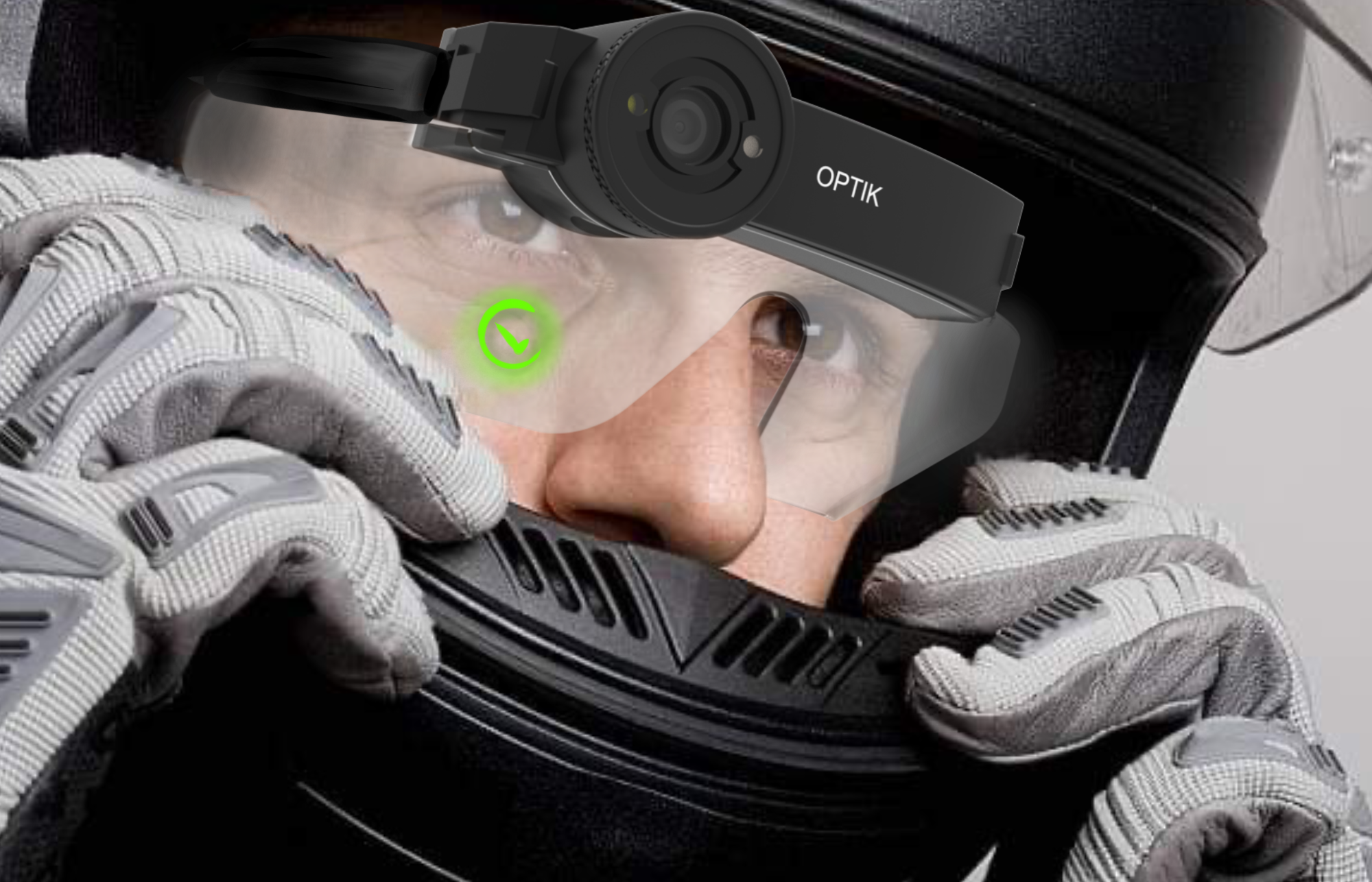
Motorcycle police officer smart glasses
The glasses are worn by the police officer while out on patrol. The glasses have a built-in AI camera that can be used to read number plates and run Automatic Number Plate Recognition (ANPR) checks and scan driver IDs to see whether they are insured or have any points on their licence. The display provides simple but useful information to the rider as it is needed, for example, the control room (radio control) can send sat nav directions to the officer while riding, so he doesn't have to stop and program his sat-nav or look down at his dashboard to take sat nav instructions in.
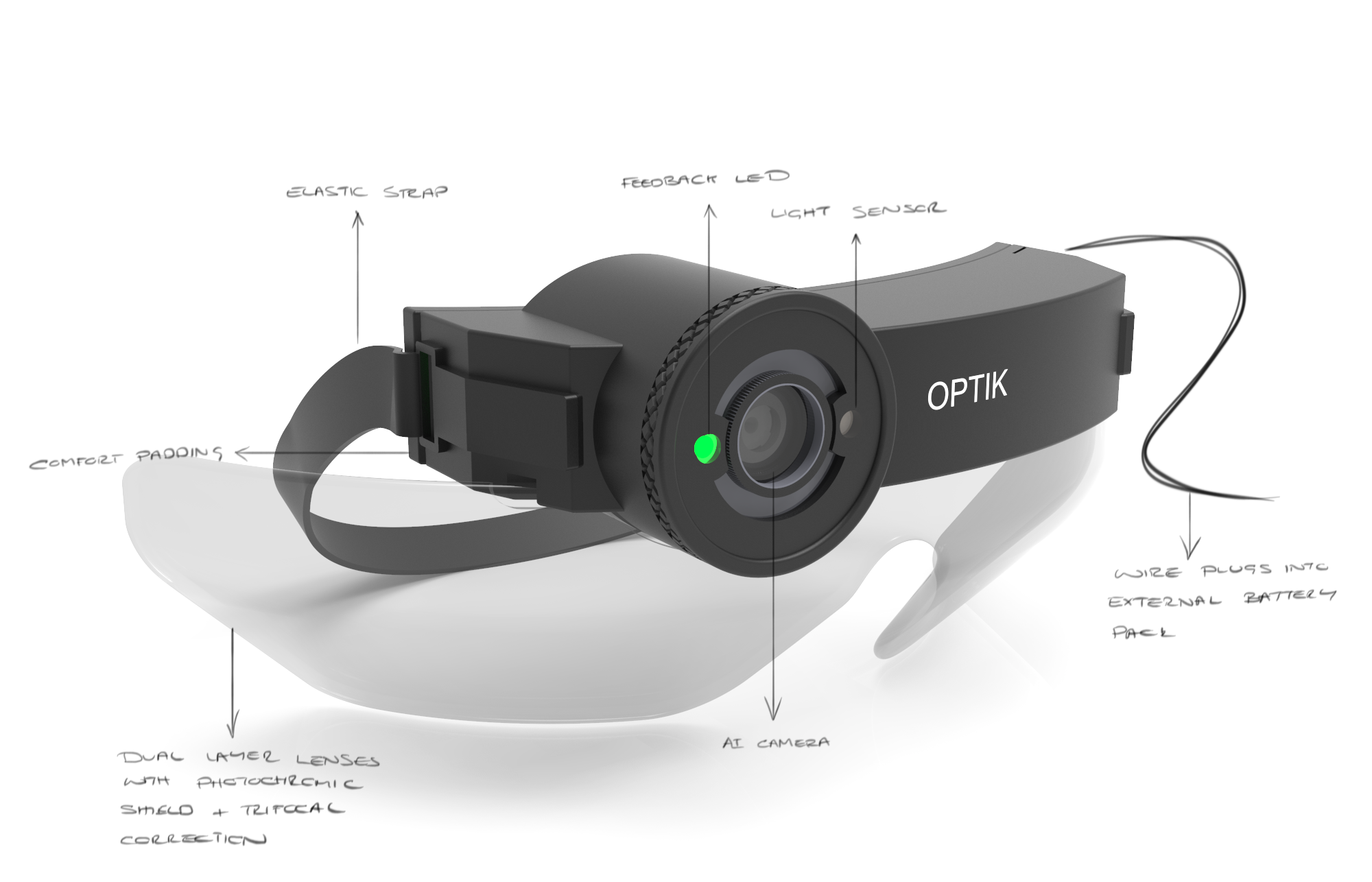

Labelled render of key parts
This shows the design before final optimisations took place (for example, I removed the strap and replaced it with two arms based on feedback from the officer's in the last interview). It doesn't show the battery pack or on-bike controller as these elements were yet to be finalised at the point of publishing this.
Features;
- AI camera for reading number plates and photo IDs
- Dual-layer lenses - photochromic shield to react to light in under 1 second, with the other layer being tailored to the officer's desired prescription.
- Elastic strap to secure the glasses to the officer's face
- Feedback LED shows when the device is on
- Light sensor triggers the brightness of the OLED to change based on how dark it is outside
- Removable padding around the back for comfort.
- Battery pack sits in the officer's pocket and is attached to the glasses via a wire; it can be charged through a second wire, or charged wirelessly from the officer's motorbike (BMW R1200 RT).
- On-bike controller powers the glasses on and off as well as resets the display after each incident.
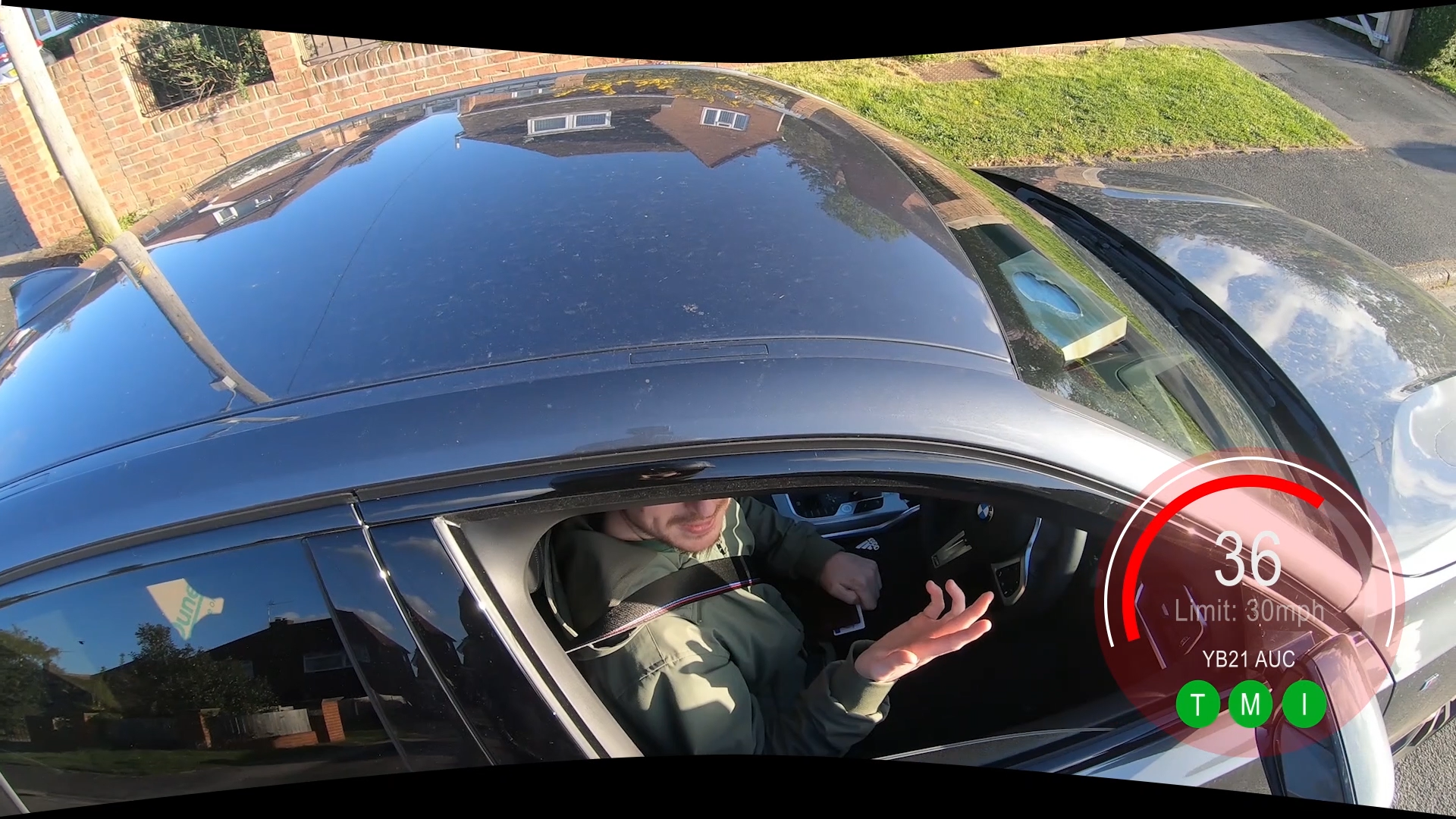

View from the display
This screenshot is taken from one of the scenario videos that I have tested with Hampshire Police. It shows a driver having been marked by the ANPR camera for speeding and pulled over by the officer; he was stopped for travelling 36mph in a 30mph zone; however, his Tax, MOT and Insurance are all up to date for the vehicle. This information is all sent to the officer's app so he has minimal details to fill in, and can almost instantly email the form over to the driver.
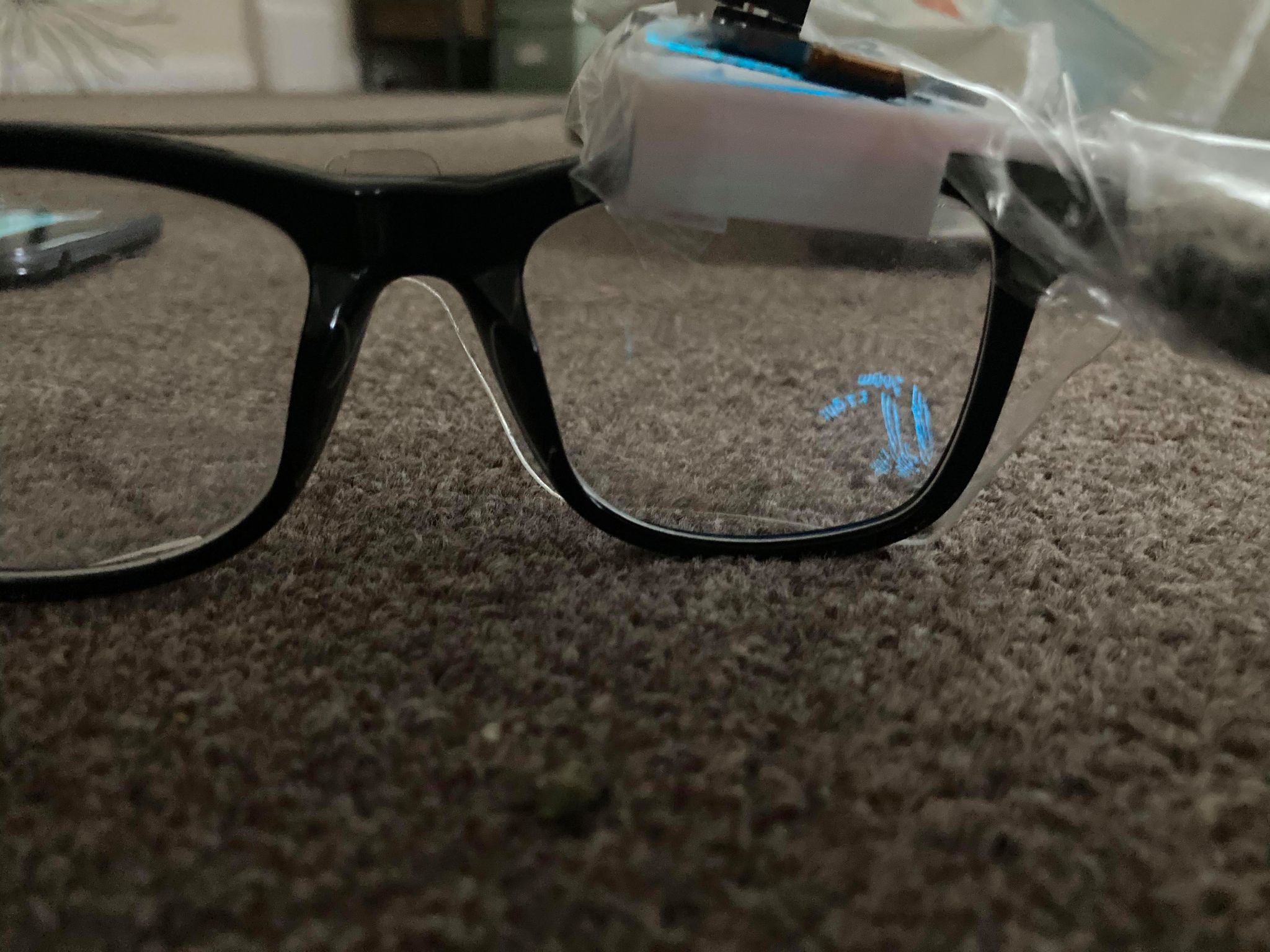

Prototyping the glasses
This image shows an OLED projecting an image onto the glasses. The OLED was connected to a Bluetooth Module which allowed me to send information to the OLED which could be displayed immediately - this simulated the display being sent information; whether it be a destination or something the camera has picked up on.
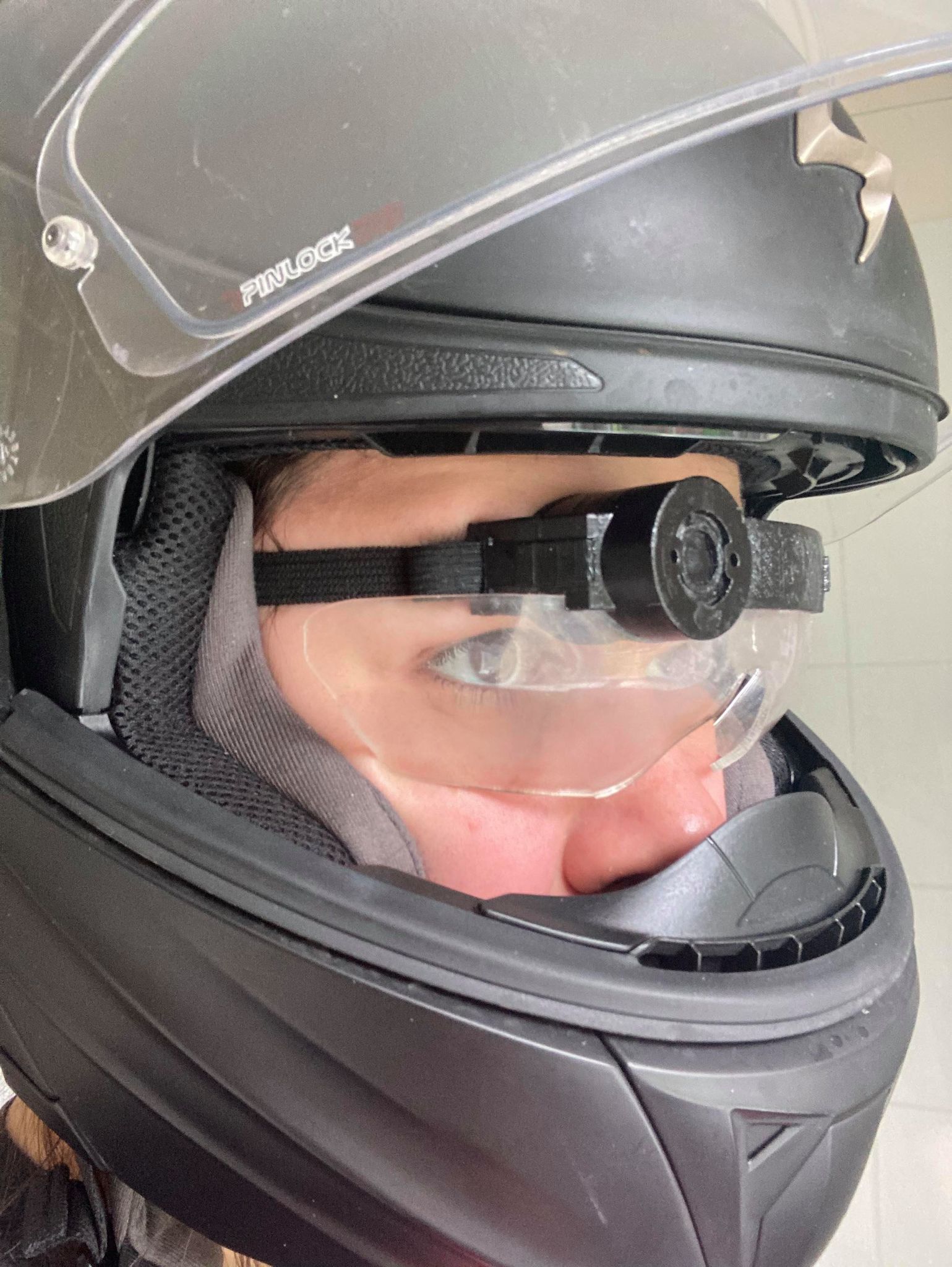

Ergonomic testing of model
I created a mid-fidelity model to test the fit of the parts. Prototypes could only be tested on ourselves this year due to COVID-19 issues. This meant I could adjust the shape of the parts to make them more comfortable for the user, for example, the lenses were digging into my cheeks as you could see.
Charlotte Matthews
Product Design student with a passion for experience design and software
My final year project combines my passion for motorcycles with a genuine interest in emergency services, particularly police officers. I believe that by carrying out research and design work in this area, that my project could benefit a user group heavily underfunded but so crucial for all of our safety. I enjoy learning about people and designing great user experiences, as well as combining creativity with technical concepts. This is why I wanted to design a product to improve the experience of riding motorcycles as a police officer, which also utilises software concepts (AI, cloud etc.) and allowed me to apply my User Experience Design skills from placement. I worked closely with Hampshire Police throughout this project, carrying out regular interviews and feedback sessions to ensure what I was designing, would be useful for them.
My current career aim is to be a Software Product Manager within the next 5 years.
Final year project
BSc Product Design & Technology
Work Experience
I carried out my placement year from July 2019 till September 2020 at IBM as a software designer for Blockchain. I thoroughly enjoyed my placement year and look forward to returning to the world of work once I have graduated. I learned a huge amount over the year, from how to design efficiently for users, to gain a basic ability to program and build websites in React JS.
My biggest challenge was starting in a UX design role having never done User Experience Design specifically. It meant I needed to pick up not only new design methods, like empathy mapping but learning a whole new load of software, like Sketch and Adobe XD. Not only this, but placement students were treated exactly like other employees, so I regularly had to give presentations, manage projects and work with a range of other teams over the year. However, I was part of a very skilled and diverse team of designers and developers, so these skills were picked up quickly.